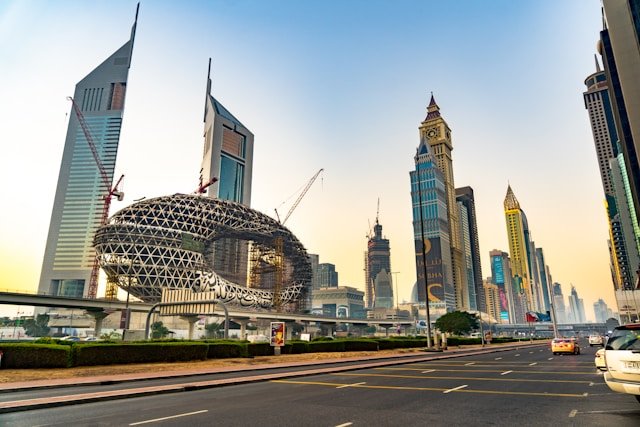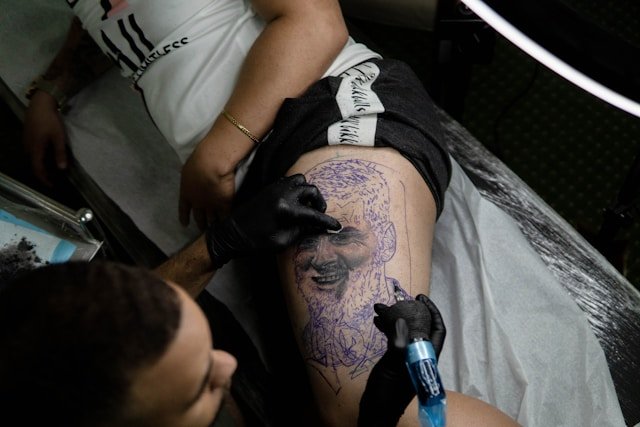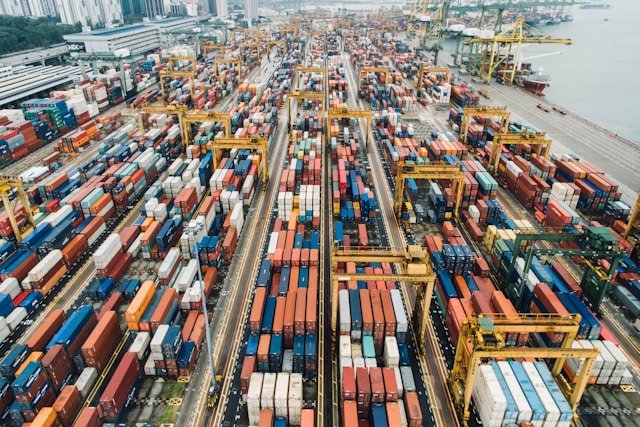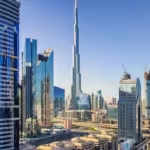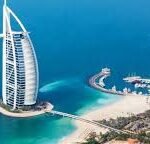The Land of Its Fortune – The United Arab Emirates: Shopping as Experience
Let’s be totally honest, when one thinks of the UAE, the first thing that strikes them would be luxury shopping extravaganza. It is certainly more than just designer labels, and such things, such as full-on retailtainment with its fleshy attractions, gourmet food courts, record-breaking architecture, and family-friendly atmospherics, transform an ordinary shopping day into an outing.
For fashionistas, tech-heads, foodies, and diverse people looking to escape the searing desert heat, the UAE’s malls are akin to indoor cities; multisensory wonderlands provide shelter and activities impervious to the elements.
So if a trip to the Emirates is coming along or a weekend outing, this is the ultimate guide to the Top 10 Malls in the UAE that you need to visit in 2025.
1. The Dubai Mall – The Jewel in the Crown of Shopping
📍 Location: Downtown Dubai
🛍️ Best for: Everything high-fashion to family fun
Let’s start with the obvious: The Dubai Mall isn’t just the biggest mall in the UAE; it’s one of the biggest in the entire world, boasting over 1,200 retail outlets and over 80 million annual visitors. Next to the internationally recognized Burj Khalifa, it is a mega-mall in every sense.
What Makes It Unique?
It Includes Dubai Fountain – Catch the most popular water show just outside.
Fashion Avenue – All high-class designer brands such as Gucci, Louis Vuitton, Chanel, and many more under.
Dubai Mall is one of the biggest promenades in the world. It has further than 1,200 shops, including popular transnational brands and fancy luxury stores. But it’s not just about shopping. You can also go ice skating on a huge rink, watch the notorious Dubai Fountain show, or visit the Dubai Aquarium – one of the largest fences hanging inside a structure. With so numerous delightful effects to do, Dubai Mall is a great place for both shopping and entertainment.
The Dubai Mall is the biggest shopping boardwalk in the world, and it’s set up in Town Dubai. The boardwalk has over 1,300 stores, including two big department stores – Galeries Lafayette and Bloomingdale’s – and more than 200 places to eat. It’s huge, with an inner area of 5.9 million square bases, and you’ll find notorious fashion brands like Gucci, Chanel, Alexander McQueen, and Ralph Lauren. The boardwalk also has a 22- screen cinema, a large ice skating rink, and the Dubai Aquarium and Aquatic Zoo, where you can see thousands of ocean creatures and walk through a glass lair for a close-up view. Right coming to the boardwalk, you can also visit the Burj Khalifa, the world’s altitudinous structure, and stay at luxury hospices like Address Dubai Mall and Address Boulevard.
2. Mall of the Emirates – Where Skiing Meets Shopping
📍 Al Barsha, Dubai:
Indoor adventures and luxury shopping
You really can ski in the desert, and this is the place to do it. The Emirates shopping mall is home to Ski Dubai, the first indoor ski resort in the Middle East.
Situated in Al Barsha, it has multiple levels housing roughly 630 foreign brands.
Including the largest Carrefour in the city, you may discover stores for fashion, lifestyle, sports, electronics, and home furnishings.
The mall provides more than simply shopping. With over 90 eateries and cafés, a 14-screen cinema, the Middle East’s first indoor ski resort and snow park named Ski Dubai, a 500-seat theatre and arts center (DUCTAC),
The mall also boasts two opulent five-star hotels—the Sheraton and the Kempinski—for extra luxury.
Pros: A ski experience like no other Centrally located and accessible via metro Mid-range and luxury brands
Cons: Smaller than Dubai Mall Dining can be pricey
3. Yas Mall – Abu Dhabi’s Giant of Entertainment
Location: Yas Island, Abu Dhabi
Best for: Families, tourists, and people visiting theme parks
Yas Mall is more than mere shopping-it is a further extension of Abu Dhabi’s entertainment capital.
Notable Attractions: 200+ international brands; Dining District with both casual and fine dining; Connected to theme parks-Great combo experiences
Pros: For day trips or extended stays on Yas Island Less crowded than Dubai malls Tons of parking and hotel access
Cons: Stays can feel isolated if you are in central Abu Dhabi.
4. Dubai Hills Mall-The Stylish Newcomer
Location: Dubai Hills Estate
🛍️Best for: Modern vibes, open spaces, and thrill rides
Having opened in 2022, Dubai Hills Mall has rapidly hitchhiked to the hearts of both the residents and tourists. Elegant and airy, it completely feels like a more curated version of some big malls.
- The modern design of this venue incorporates broad open areas, natural lighting, and rich landscaping to provide a modern, elegant ambience.
- Hosts over 600 retail outlets, including top global fashion, lifestyle, and electronics brands.
- Dining Variety offers a wide range of stylish restaurants and cafés, from gourmet meals with outdoor seating and beautiful vistas to casual snacks.
- Easy access from Downtown Dubai, Al Barsha, and neighboring areas places you at the heart of Dubai Hills Estate.
- Dubai Hills Mall is well known for blending modern luxury, family fun, and convenience—therefore it is a sought after hangout place for shopping and entertainment.
What to Check Out:
Storm Coaster- awe-inspiring indoor roller coaster
The Instagrammable Minimalist Design
Zara, Pottery Barn, Nike, etc.
🟢 Pros:
Not crowded (yet!)
Perfect place for casual shopping
Clean and sleek ambiance
🔴 Cons:
Limited public transport access
Food and beverages scene is still evolving
5. City Centre Mirdif-Family-Oriented and Fun
📍Location: Mirdif, Dubai
🛍️Best for: Families, local brands, and community events
Affordable and varied is what these malls stand for in the local culture. A smidge less glamorous than the daddy of them all, City Center Mirdif is highly regarded among Dubai residents for its strong focus on family orientation and space.
- City Centre Mirdif, Family-Oriented and Fun is well known for being among the most family-friendly shopping and entertainment locales in Dubai. Here is its most well-known aspect:
- Family-Focused Entertainment includes Magic Planet, a big indoor play area with rides, games, and activities for youngsters of all ages, and iFly Dubai, the first indoor skydiving experience in the region.
- VOX Cinemas, a contemporary cinema facility with MAX, GOLD, and Kids screens, provide a superb film experience for children as well as grownups.
- With more than 450 stores spread throughout, including well-known foreign brands in fashion, electronics, toys, house décor, and more,
- With open areas, natural light, and environmentally aware design elements, the mall encourages environmentally friendly living.
- Great dining choices include family-friendly restaurants and food halls as well as cafés for laid-back meals and fast snacks.
- Convenient for Nearby Communities – Situated in Mirdif, it is popular among locals of adjacent regions seeking a joyful and simple day vacation with the entire family.
- City Centre Mirdif is well-known for being an all-in-one destination for shopping, entertainment, and dining—ideal for families with children—safe, enjoyable.
Extras:
Little Explorers and Magic Planet for the kids
Ample parking space and accessible via Metro
Affordable dining and shopping options
🟢 Pros:
Not very touristy: very laid-back
Nice mix of shopping, cinema, and kid zones
🔴 Cons:
Not the best for high-end brand hunters
Modern vibes, open spaces, and thrill rides Best for Opened in 2022
6. The Galleria Al Maryah Island: Abu Dhabi’s Luxury Treasure
📍 Site: Al Maryah Island, Abu Dhabi
Best for: Luxurious shopping and vistas of the ocean
Visit The Galleria for a classy, sophisticated look. With names like Prada, Dior, and Cartier gracing its marble pathways, it gives the core of Abu Dhabi Fifth Avenue energy.
Must-see locations:
High-end spas and fitness studios
Year-round activities and seasonal pop-ups
Abu Dhabi’s Galleria Al Maryah Island, a luxury destination, is well-known for providing a world-class combination of high-end lifestyle experiences, fine dining, and luxury shopping. Here’s what sets it apart:
Known for its ultra-luxury fashion and jewelry boutiques including top brands like Chanel, Louis Vuitton, Cartier, Gucci, and Rolex, luxury brands are a destination for high-end shopping.
Fine dining, perfect for food lovers and elegant diners, encompasses a variety of gourmet restaurants and upscale cafes including worldwide favorites such as Zuma, Coya, Nusr-Et, and LPM Restaurant & Bar.
The mall’s elegant design, waterfront vistas, and refined interiors generate a rich and quiet shopping atmosphere.
Combining luxury with family-friendly entertainment, VOX Cinemas, an Xtreme Zone, and a committed play area for children offer
Premium Location: Located on Al Maryah Island, Abu Dhabi’s financial and lifestyle center, it easily connects to corporate hotels and business centers.
The Galleria Al Maryah Island is well-known for being Abu Dhabi’s premier venue for opulent shopping, fine dining, and upscale entertainment in a beautiful waterfront environment.
Advantages:
- Premiums atmosphere,
- Less foot traffic,
- Greater exclusivity.
Disadvantages:
Costly
Not friendly for budget shoppers.
7. Dubai Festival City Mall by the edge of water
📍 Position: Dubai Creek
Best for views, live concerts, and food
Dubai Festival City Mall, located by the edge of water, is well known for its beautiful waterfront setting, unusual attractions, and blend of shopping, dining, and entertainment. This is what distinguishes it:
- Waterfront Dining offers gorgeous views of Dubai Creek along the promenade, ideal for sunset dinners and quiet evenings.
- Great Shopping Alternatives – At over 400 stores including major global brands like IKEA, Marks & Spencer, and Zara, but also the region’s only Robinsons Department Store (at time of opening).
- Features Novo Cinemas, a big family entertainment center, and recurring events makes it perfect for weekend enjoyment.
- Direct hotel access—linked to InterContinental, Crowne Plaza, and Holiday Inn—makes this a convenient shopping and leisure destination for visitors as well as locals.
- Easy Creek Transport adds to its appeal as a waterfront destination by providing abra rides and water taxi access.
- Dubai Festival City Mall is renowned for combining creekside beauty, spectacular shows, varied shopping, and waterside dining—thereby providing an unusual and picturesque mall experience in Dubai.
Fun fact:
The IMAGINE performance has a Guinness World Record for the biggest water screen projection.
Anything else?
For practical shopping at IKEA and ACE Hardware
– Ripe Market pop-ups
excellent waterfront food
Advantages:
Stunning creekside vistas
Original light displays and outside events
Disadvantages:
Dated a little compared to more current malls.
Mid-range choice.
8. Marina Mall: Original Abu Dhabi Shopping
📍 Location: Corniche Road, Abu Dhabi
Ideal for sea views and a traditional mall experience.
Marina Mall, once the preferred mall in Abu Dhabi, still has allure thanks to its vintage design, spinning observation tower, and top-quality Corniche and Emirates Palace views.
- Marina Mall – Original Abu Dhabi Shopping is well-known for being among the first big malls in the city with a classic blend of retail, dining, and amusement presented in a beautiful waterfront setting. Here is what it typically relates to:
- Situated along the Corniche next to the Emirates Palace and looking out over the Abu Dhabi Marina, it provides stunning sea views and a prime position.
- Home to a unique observation tower with a rotating restaurant and sweeping vistas of the city and coast, Iconic Tower
- Diverse Shopping features over 400 stores—a mix of high-street brands, designer labels, and local boutiques—a favorite among visitors and residents alike.
- With a sizable indoor amusement park, bowling alley, and VOX Cinemas, Family Entertainment is a full family day-out destination.
- Dining options include a popular food court as well as laid-back and upscale dining establishments overlooking the marina.
Being among Abu Dhabi’s oldest and most reputable malls, it has a relaxed ambiance and roomy design.
Marina Mall is well known for being Abu Dhabi’s first shopping and leisure center that blends beautiful waterfront appeal with dining, shopping, and entertainment for all ages.
Things to see:
Bounce Trampoline Park
Fun City For Children
Mixed choice of local and foreign products
Prose: Central position, wonderful activities and sights.
Cons:Needs an interior upgrade as well as brand mix enhancement.
9. Al Zahia City Center: Sharjah’s Shopping Honour
📍 Location: Sharjah
Best for: Contemporary retail, community, and convenience.
Launched in 2021, City Centre Al Zahia is Sharjah’s biggest mall, presenting a more opulent and cleaner experience than ever before in the emirate.
- Famed for being Sharjah’s largest and most modern shopping center, City Centre Al Zahia provides a premium retail and lifestyle experience. Here is what distinguishes it:
- Designed with families in mind, including large walkways, children’s play areas, baby care rooms, and lots of seating.
- Includes fashion, electronics, beauty, and home retailers as well as the biggest Carrefour Hypermarket in the Northern Emirates.
- Home to Magic Planet, VOX Cinemas, and interesting attractions that keep kids and adults busy, Entertainment for All Ages
- From fast snacks to full-service dining, with outdoor and indoor seating possibilities, offers dozens of restaurants and cafés.
- Sustainable and stylish architecture combines modern design, natural lighting, environmentally friendly components, and a sophisticated shopping experience.
- City Centre Al Zahia is well known for being Sharjah’s premier shopping, eating, and entertainment venue—a marker of the emirate’s expanding lifestyle and retail scene.
Attributes:
360+ restaurants and stores
Gold Class VOX Cinemas
Events and entertainment for youngsters seasonally
Benefits: Big improvement for Sharjah’s life scene
less disorderly than Dubai malls
Advantages: Big rise for Sharjah’s life scene
Less turbulent than Dubai malls
Disadvantages: Still building brand recognition
10. Wafi Mall:
Oud Metha in Dubai
Best for boutique shoppers and architecture enthusiasts
Last but surely not least: With its Pharaonic-themed architecture, Wafi Mall draws attention. Though it is less noisy than most other malls, that also contributes to its allure.
Wafi Mall, Dubai’s Egyptian-inspired landmark, is well-known for its distinctive design, opulent shopping, and cultural appeal. Here is what distinguishes it:
- Egyptian-themed design, renowned for its Pharaoh-inspired structures replete with pyramids, sculptures, pillars, and hieroglyphs, makes this among the most visually unique shopping centres in Dubai.
- Boutique luxury shopping is renowned for high-end retailers, private designer boutiques, and distinctive fashion and jewelry brands not readily available elsewhere.
- One of Dubai’s most well-known destinations for genuine Middle Eastern food with stunning creek views, Wafi Gourmet, is a highlight.
Cultural Attractions:
- Family entertainment encompasses seasonal events for children and families, VOX Cinemas, and a Kids Connection play area.
- Luxury Wellness & Hotels connected to Raffles Dubai Hotel provide opulent spa and wellness experiences.
Attractions:
Cleopatra’s Spa: An opulent wellness destination
boutique boutiques and artisan stores
Pros:
Unusual design and silent surroundings
Excellent for cultural events
Cons:
Fewer mainstream shops
Not perfect for a whole-day excursion
Numbers from the 2025 UAE Mall Scene
Total Malls in UAE: 120+ big ones.
Over eight million square meters are total retail space.
Final Thoughts: Which mall should you go to?
Dubai Mall and Mall of the Emirates are must-see attractions if you are visiting the UAE for the first time.
Searching for something less loud but just as rewarding? Got children? Visit Yas Mall or City Centre Mirdif.
Useful Insight:
Arrange your mall trips according to your wish to do: shopping, adventure, eating, or simply relaxing near the ocean. There’s a mall in the UAE for every emotion, and in 2025 they will grow even larger and better.






